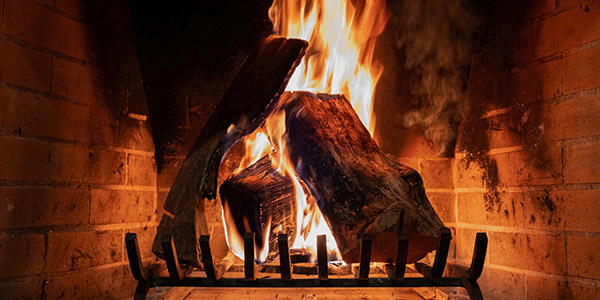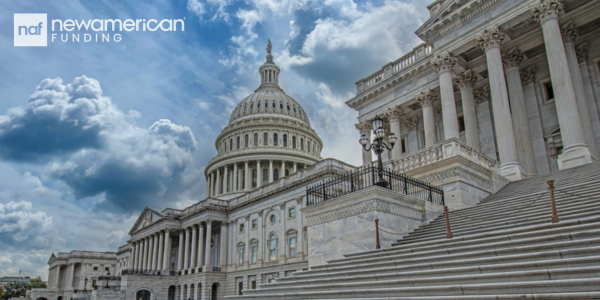Housing News
The Risks of Having a Fireplace
January 27, 2016
Of the many features of a home, there are several that are nearly universally valued by prospective home buyers. One of these is a fireplace. According to SFGate, buyers have ranked fireplaces as one of the top three amenities they look for in a house. People have been known to pay thousands of dollars more than what the home would have cost otherwise to have a fireplace.
While a fireplace certainly conjures up cozy images of warmth and family gatherings, you may want to think twice before purchasing a home with one. They are the source of risks of all kinds, from pollution to fire hazards.
Woodsmoke Is Harmful
If you have a wood-burning fireplace in your home, you may want to pause before throwing another log on the fire. The U.S. Environmental Protection Agency explained burning wood in your home can cause some health problems to those in the house. Some issues may go away after the fire goes out and the smoke dissipates. However, smoke can also potentially cause more serious respiratory illnesses like bronchitis and pneumonia. It can also reduce the effectiveness of the immune system, Environment, and Human Health, Inc. said. If you or someone in your home has asthma, smoke can prompt attacks.
The particles in woodsmoke are smaller than what your lungs can filter out. The Cleveland Clinic explained that particles with a diameter smaller than 10 micrometers are the most harmful because they can become lodged in your lungs and may enter your bloodstream. The particles in woodsmoke are typically about 2.5 micrometers. The EPA warned that long-term exposure to PM 2.5 has been linked to cancer.
Polluting Your Home and Environment
Harmful particles released through combustion aren't the only thing you should worry about. The EPA explained toxins such as formaldehyde and benzene are also released when wood is burned. Formaldehyde exposure could lead to coughing and other throat irritation, wheezing, and bronchitis. Being around the substance for a prolonged period could result in ulcers located in your mouth and throat, as well as gastrointestinal tract corrosion. Breathing in low levels of benzene can make a person drowsy or dizzy, according to the Agency for Toxic Substances & Disease Registry.
Carbon monoxide is also a concern in many people's homes. Street Directory explained burning any fuel source produces carbon monoxide. This gas is generally undetectable, yet it can seriously harm or kill a person if exposed to high levels. Carbon monoxide detectors can warn a person if their home contains the substance, so make sure your home is equipped with one. According to The Telegraph, the dark marks around a fireplace or other appliances that burn fuel are good indications of carbon monoxide emissions.
Haze is another environmental concern connected to burning wood. This is the reduced visibility that is created when sunlight hits particles in the air, such as those given off during combustion, the EPA explained.
Fire Hazard
One of the main concerns of having a wood-burning fireplace in your home is the fire hazard it creates. According to the Chimney Safety Institute of America, 21,200 of the fires in 2012 were caused by fires in a fireplace, chimney, or chimney connector. Chimney fires are especially a concern because they are harder to detect than a fire that gets out of hand in the fireplace itself. Some signs of chimney fires include:
- A low, rumbling sound
- Loud popping or cracking noise
- Hot, overpowering smell
The damage they cause can be extensive, costly, and dangerous. They burn at temperatures around 2,000 degrees or higher, depending on the type of chimney. In a masonry chimney, tiles can crack and explode and the mortar can melt. This can cause structural damage to the chimney, not to mention put anyone in the vicinity at risk of getting hit with a very hot piece of tile. Chimney fires in wood stoves will often warp, break, or separate from the chimney.
Stay Safe and Prevent Hazards
While having a wood-burning fireplace in your home does come with its fair share of risks and dangers, many homeowners still appreciate the ability to sit around a fire and the value it adds to the home. According to SFGate, 36 percent of new homes built in the 1970s had fireplaces. In just four decades, that percentage nearly doubled.
If you decide to buy a home with a fireplace, make sure you take extra precautions to keep you and your family safe. If someone in your home has respiratory problems or a history of lung disease, it is best to use the fireplace sparingly.
Buy a carbon monoxide detector so you know if levels of the gas reach a dangerous level. Also, the Telegraph explained fireplaces working properly lower the risk of carbon monoxide emissions.
To prevent chimney fires, make sure your chimney is cleaned properly. The CSIA suggested having a certified chimney sweep clean and repair the chimney whenever it is needed. It should be checked regularly to ensure creosote, a sticky, flammable byproduct of smoke and gasses released during combustion, is not building up on the inside of your chimney.
All homes, regardless of whether they have a fireplace or not, should have a fire extinguisher in an easily accessible place. However, if the fire is in the chimney or too big to handle, don't try to control it yourself. Calling 911 is the safest option in this case.
Sources
1 Chimney Safety Institute of America
2 Chimney Safety Institute of America
3 U.S. Environmental Protection Agency
4 The Telegraph
5 Agency for Toxic Substances & Disease Registry
6 U.S. Environmental Protection Agency
7 Cleveland Clinic
8 SFGate





 Smart Moves Start Here.
Smart Moves Start Here.